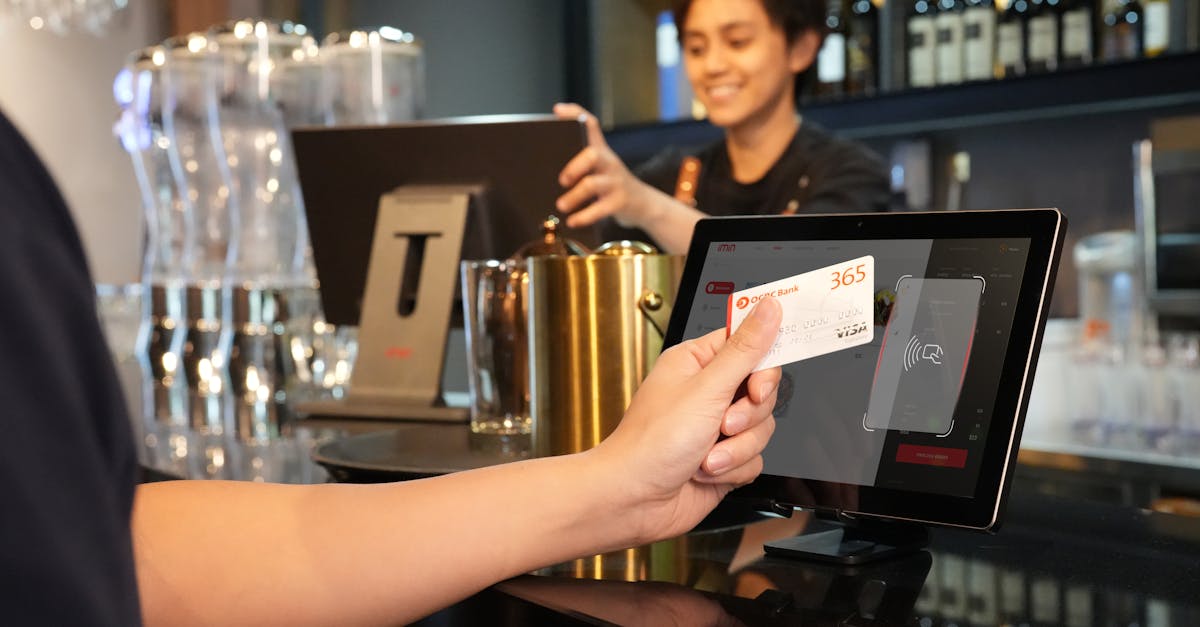In a world where technology often feels like a foreign language, no-code POS systems are here to rescue the day. Imagine running your business without the headache of complicated software—where all it takes is a few clicks to set up a point-of-sale system that works for you. Sounds like a dream, right? Well, wake up because it’s reality!
Table of Contents
ToggleOverview of No-Code POS Systems
No-code point-of-sale (POS) systems streamline business operations by allowing users to configure their own systems without programming skills. Users can launch these systems quickly, often within minutes, making the technology accessible to a wide range of businesses. Customization options enhance the user experience, enabling businesses to tailor features to meet specific needs.
With no-code POS systems, integration with existing tools is often seamless. Businesses frequently connect these systems to payment processors, inventory management solutions, or customer relationship management platforms. This integration capability eliminates data silos and provides a holistic view of operations.
Support for various hardware devices enhances versatility. Common devices include tablets, smartphones, and barcode scanners, making these systems adaptable to different retail environments. User-friendly interfaces further contribute to the appeal, ensuring that employees can learn the system without extensive training.
Scalability proves a significant advantage for businesses. As operations grow, no-code POS systems can evolve alongside them. Companies often benefit from the capacity to introduce new features or expand functionalities to accommodate increased sales volume or customer demands.
Adoption of no-code POS systems leads to reduced costs related to hiring IT specialists. Organizations leverage these solutions to empower staff members with administrative rights, encouraging them to manage and operate the system efficiently. This approach fosters a sense of ownership among employees, driving better performance and satisfaction.
Trends in e-commerce highlight the increasing popularity of no-code solutions, as more businesses recognize the need for rapid adaptability. The simplicity of these systems supports ongoing innovation in various sectors, ensuring that companies stay competitive in a continuously changing marketplace.
Benefits of No-Code POS Systems
No-code POS systems offer significant advantages for businesses seeking flexibility and efficiency. The simplicity of these systems streamlines daily operations and enhances user satisfaction.
Ease of Use
User interfaces in no-code POS systems are designed for intuitive navigation. Configuring a system requires minimal technical knowledge, allowing employees to set up and run the system independently. Training demands decrease significantly, with many users becoming proficient within minutes. Quick adjustments and updates can occur swiftly, fostering a more responsive business environment. Customization options enhance the user experience by allowing businesses to modify features according to unique operational needs.
Cost Efficiency
Cost savings emerge as another compelling benefit of no-code POS systems. Businesses avoid hiring IT specialists, reducing ongoing operational expenses. Many systems come with transparent pricing models, helping companies understand expenses upfront. By empowering staff to manage technology, organizations can allocate resources more effectively, investing in areas that drive growth. These systems also minimize downtime, allowing businesses to maintain productivity and customer service without interruption.
Features to Look for in No-Code POS Systems
No-code POS systems offer key features that enhance business operations. Understanding these features helps organizations make informed decisions.
Integration Capabilities
Integration capabilities represent a vital feature of no-code POS systems. These systems often connect seamlessly with existing tools like payment processors, inventory systems, and customer relationship management software. A comprehensive integration ensures real-time data synchronization, allowing businesses to maintain an accurate view of operations. When a POS system merges with e-commerce platforms, sales tracking and inventory management improve significantly. Thus, streamlined workflows enhance efficiency across various business functions.
Customization Options
Customization options enable businesses to tailor their no-code POS systems to specific needs. Users can modify features such as payment options, reporting formats, and user interfaces without technical expertise. This flexibility allows organizations to adapt the system as their requirements evolve. When POS systems provide modular functionalities, businesses can implement changes easily, reflecting unique operational demands. Consequently, these tailored solutions enhance the overall user experience and support diverse business models effectively.
Popular No-Code POS Systems
Numerous no-code POS systems cater to businesses seeking straightforward solutions for managing sales and operations. Each system offers unique features to enhance efficiency and user experience.
System 1: Square
Square serves as a leading no-code POS solution, known for its ease of use and robust features. With an intuitive interface, users can quickly navigate through sales transactions and inventory management. Integrating with various third-party applications, Square enables timely updates and real-time data analytics. Its compatibility with different devices, including tablets and smartphones, ensures flexibility in deployment. Businesses benefit from transparent pricing models and no monthly fees, making it especially attractive for small to medium-sized enterprises.
System 2: Shopify POS
Shopify POS provides a seamless experience for online and offline retailers, allowing businesses to unify their sales channels. Captivating customers through customizable checkout options, users can tailor payment methods to suit their needs. Shopify POS integrates effortlessly with the Shopify e-commerce platform, streamlining inventory management across all sales channels. Enhanced reporting tools provide valuable insights into sales performance, empowering businesses to make data-driven decisions. Its ability to support various hardware configurations aids retailers in adapting to their unique environments.
Challenges and Limitations
No-code POS systems come with challenges that businesses must consider. Customization options, while useful, can lead to overcomplication if too many features are added. Users might feel overwhelmed by the choices available, which can hinder the setup process.
Integration issues can arise with existing tools. Occasionally, compatibility problems occur between the no-code POS systems and legacy software. Businesses may face disruptions during transitions, affecting operational efficiency.
Scalability poses another limitation for some no-code solutions. Certain systems may not handle large volumes of transactions or complex business operations effectively as growth occurs. For businesses anticipating expansion, it’s essential to choose a system that adequately supports future needs.
Support limitations often surface as well. Many no-code POS providers offer basic customer service, but in-depth technical assistance may be lacking. When unique issues arise, companies might struggle to find timely resolutions, resulting in potential downtime.
Security concerns are a significant consideration. Users must ensure that no-code solutions comply with industry standards for data protection. Inadequate security measures might expose sensitive customer information, leading to potential breaches.
Lastly, cost implications vary widely among no-code systems. While many provide transparency, hidden fees can surface, creating budgetary challenges. Businesses should thoroughly examine pricing structures before making commitments.
Conclusion
No-code POS systems are revolutionizing how businesses manage transactions and operations. They offer a user-friendly approach that empowers staff to take control without needing technical expertise. With the ability to customize and integrate seamlessly with existing tools, these systems cater to various business models.
As businesses strive for efficiency and adaptability in a competitive landscape, no-code solutions provide the flexibility to grow and evolve. While challenges exist, the benefits of reduced costs and streamlined operations make no-code POS systems a compelling choice for modern enterprises. Embracing this technology can lead to enhanced productivity and improved customer satisfaction.





